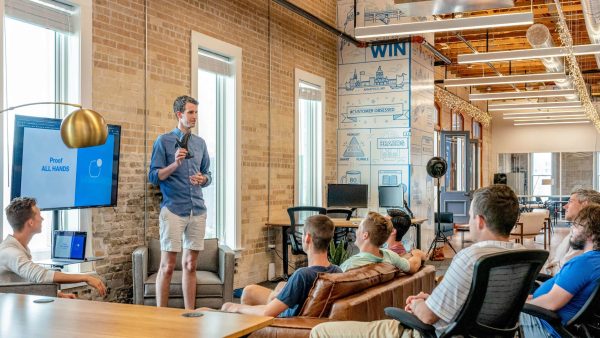Gamification can drive engagement in eLearning courses by increasing interest and adding functionality to learner experience. Game concepts such as earning points, assigning badges, and posting leaderboards can act as built-in motivators for courses, tailored to the look and feel of the organization’s brand.
An organization seeking to apply gamification to its learning program needs a flexible LMS with gamification features that suit the organization’s culture. Companies of any size can use gamification concepts to encourage engagement in employees’ development. Qbic is an example of an LMS that provides the versatility needed to customize gamification for the specific recognition needed to award learner achievements.
What is Gamification?
“Gamification” describes how game-playing functions can be used in other systems, such as marketing or eLearning. Examples of these functions include the ability to keep score, choose winners, or assign rewards, all of which can increase engagement in an LMS course.
Applying gamification in the workplace can emulate traditional workplace awards and recognition similar to “employee of the month” concepts by turning them into attainable game-like elements that employees will want to engage with. Options of how to employ and display these awards will depend on the functionality of the LMS. However, gamification principles remain the same in how they increase user loyalty to a learning program by fostering competition, providing tangible rewards for performance, and encouraging long-term engagement.
How Can a Corporate LMS Utilize Gamification for Employee Development?
The capabilities of a corporate LMS and the organization’s goals for gamified concepts will help define what the overall game experience should look like. For example, a customizable LMS like Qbic can create game experiences by controlling the look and feel of reward elements for different levels of achievement.
Leaderboards are a common way to effectively gamify the eLearning system by offering the reward of recognition to learners. By assigning placement on a leaderboard based on learner performance, an organization can encourage friendly competition among coworkers. Badges, points, and other features could take the recognition to the next level, customized to present rewards to learners in a way that best represents the organization’s brand.
Can Gamification Functions Respond to Performance?
The state of an eLearning program being “gamified” is not an absolute, all-or-nothing idea. This is why the more sophisticated LMSs feature the ability to recognize learners based on a variety of optional elements such as course points, badges, certificates, and other criteria. As learners accumulate these awards, leaderboards can be viewed in detail and adjust how courses are gamified based on the desired performance.
Gamification is a process that requires an understanding of what motivates your team based on the engagement of learners. An effective, customizable LMS ensures that the depth of the course’s gamification can grow as employees grow, which helps maintain continued engagement over time. Versatility is key when strategically planning the gamification implementation to match the learners’ performance and brand needs. Qbic provides features that are simple to use in order to gamify courses. Yet, it also retains enough customizability to match the plan of the process of gamification to the organization’s evolving understanding of how and why modern learning programs should be gamified.


